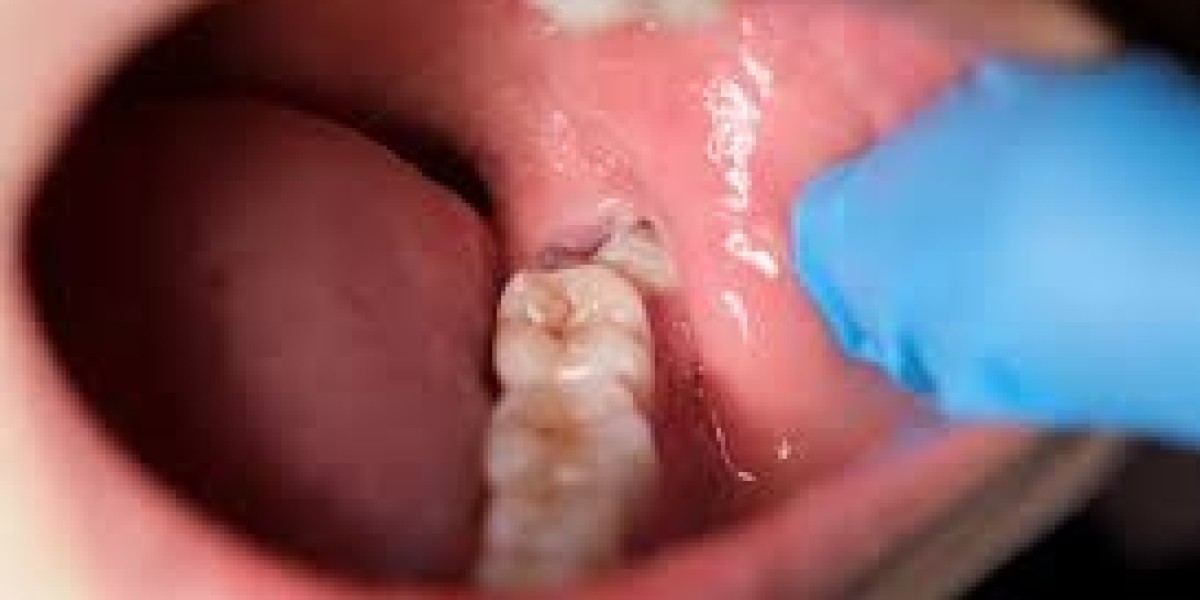If you’re preparing for or recovering from a tooth extraction, you may be wondering what are dry sockets and how to prevent them? Dry socket, or alveolar osteitis, is one of the most painful complications that can occur after a tooth is removed—especially Wisdom Tooth Extraction Treatment. It happens when the blood clot that normally forms in the socket is lost or fails to develop, leaving nerves and bone exposed. Fortunately, dry sockets can often be prevented with careful aftercare and awareness of risk factors.
Understanding What a Dry Socket Is:
A dry socket occurs when the natural healing process is disrupted. After a tooth extraction, a blood clot forms in the socket to protect the area and aid healing. When that clot dissolves prematurely or gets dislodged, the socket is exposed to air, food, and bacteria, causing intense pain and delayed healing. Key characteristics include:
Severe Pain: Starting 2–4 days after extraction, often radiating to the ear or jaw
Empty Socket Appearance: Visible bone or missing blood clot
Bad Breath or Unpleasant Taste: Due to trapped food or infection
Delayed Healing: The area remains sore or inflamed longer than expected
Dry sockets are not infections themselves, but they increase the risk of developing one if untreated.
Common Causes and Risk Factors:
Knowing what leads to dry socket can help you avoid this painful complication. Several behaviors and conditions can increase the likelihood of developing it after an extraction. These include:
Smoking or Using Tobacco: Chemicals delay healing and can dislodge the clot
Using Straws: Suction can pull the clot out of place
Poor Oral Hygiene: Increases the risk of infection and complications
Spitting or Rinsing Too Forcefully: Disturbs the fragile clot during early healing
Oral Contraceptives: Estrogen may interfere with clot stability
Previous History of Dry Socket: Recurrent risk in future extractions
Your dentist may provide personalized guidelines based on these risk factors to protect your recovery.
Early Signs and Symptoms to Watch For:
Recognizing dry socket early allows for quicker treatment and pain relief. While mild discomfort is normal after an Wisdom Tooth Extraction, dry socket symptoms are more severe and specific. Here are common indicators:
Throbbing Pain: That worsens after the third day post-extraction
Visible Bone in the Socket: Instead of a dark red clot
Pain That Spreads: To your temple, ear, or neck
Foul Odor or Taste: Signaling food debris or infection
Lack of Improvement: Pain does not respond to typical recovery measures
If you notice these symptoms, contact your dentist immediately for an evaluation and treatment.
Effective Ways to Prevent Dry Socket:
Preventing dry sockets starts before the procedure and continues throughout recovery. By following aftercare instructions and making a few changes to your habits, you can greatly reduce the risk. Here’s what you can do:
Avoid Smoking and Tobacco for at Least 72 Hours: Longer if possible
Skip the Straw: For 5–7 days post-extraction
Rinse Gently: With saltwater only after the first 24 hours
Maintain Good Oral Hygiene: Brush gently around the surgical site
Eat Soft Foods Only: For the first few days to avoid disturbing the area
Stay Hydrated and Rested: Supports overall healing
Follow All Dentist Instructions: Including medication, rest, and follow-ups
Even one misstep during recovery can lead to a dry socket, so be diligent during the critical healing period.
Treatment Options If a Dry Socket Develops:
If you develop a dry socket despite best efforts, prompt professional treatment is key to relief and recovery. Your dentist or oral surgeon can manage the condition with the following:
Socket Cleaning: Removes trapped food or bacteria
Medicated Dressings: A special paste or gauze to soothe the area and promote healing
Pain Management: Prescription pain relief or anti-inflammatories
Home Care Instructions: Continued rinsing with saltwater or medicated solutions
Follow-Up Visits: To ensure healing progresses properly
With proper care, most dry sockets begin improving within a few days. Early intervention is essential to avoid worsening symptoms and complications.







